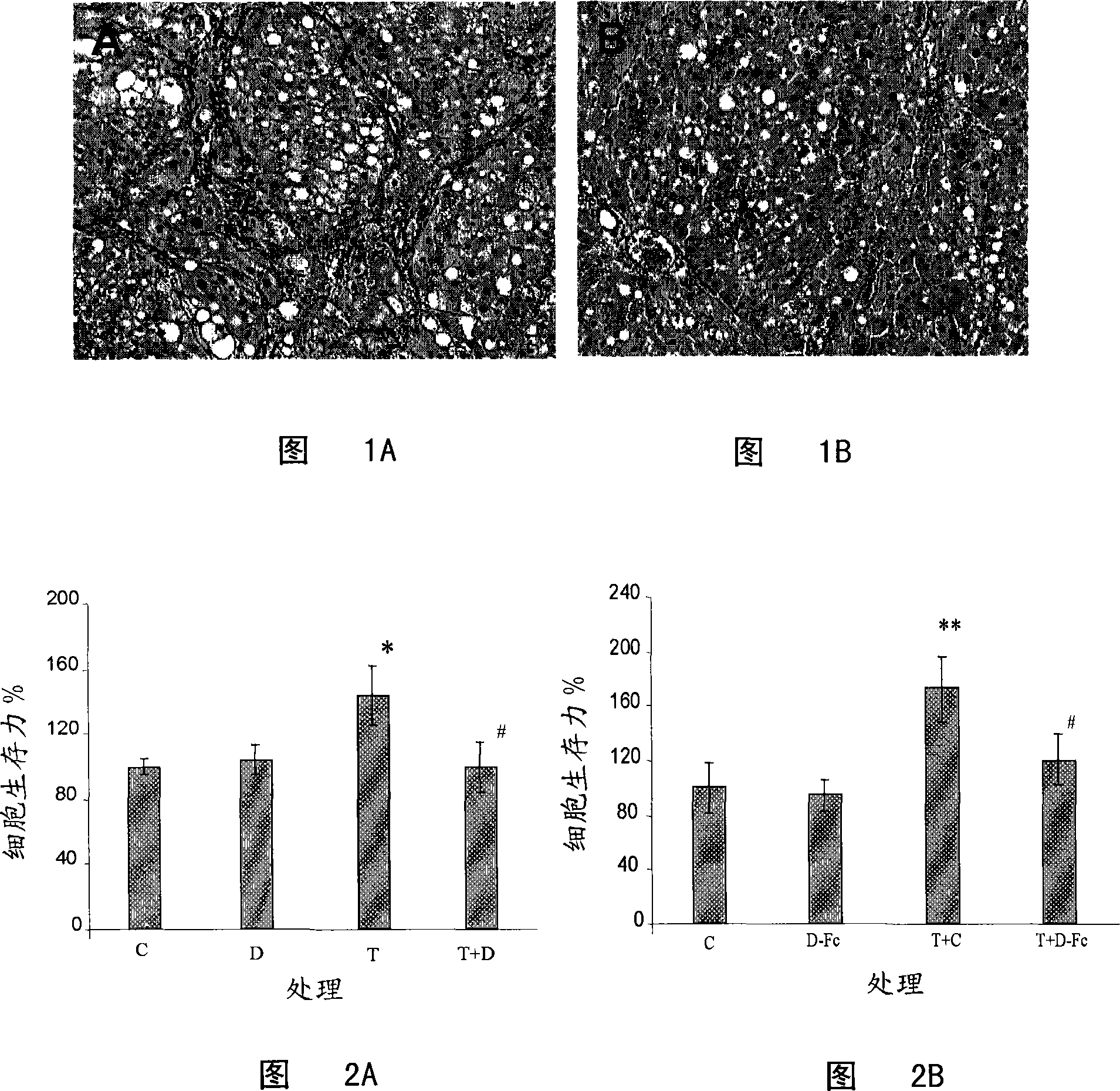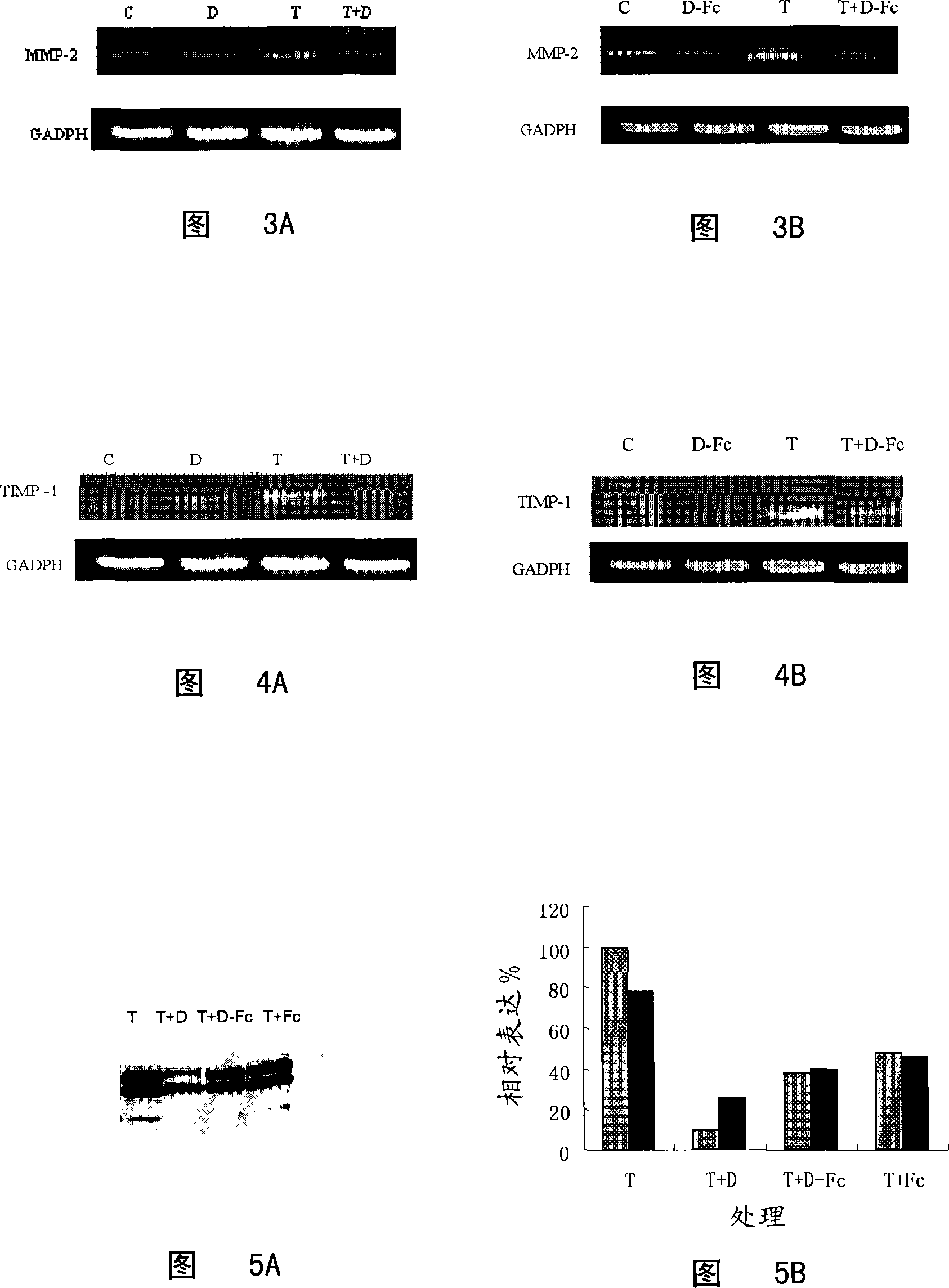Method for inhibiting fibrogenesis by an rhdecorin-fc fusion protein
A decorin, fusion protein technology, applied in proteoglycan, biochemical equipment and methods, fusion polypeptides, etc., can solve the problem of applying decorin without Fc fragment
- Summary
- Abstract
- Description
- Claims
- Application Information
AI Technical Summary
Problems solved by technology
Method used
Image
Examples
Embodiment 1
[0050] Inhibition of hepatic fibrogenesis in rats by rh-decorin
[0051] Materials and methods, animals and experimental design
[0052] All experiments were performed using accepted ethical guidelines. Male Wistar rats (Beijing Medical University) weighing 200-250 g were used in this study. Animals had free access to food and drinking water. 40% CCl4 (Sigma) was prepared by mixing CCl4 with olive oil. Liver injury and fibrosis were induced by subcutaneous injection of 40% CCl4 at 3 ml / kg body weight twice a week for 8 weeks. CCl4 control animals received olive oil only.
[0053] rhDecorin was administered intraperitoneally at a dose of 20 μg / kg / d body weight per day. RhDecorin was extracted from the culture medium of Cos-7 cells transfected with decorin.
[0054] In this way, 3 groups can be distinguished, each group comprising 7 animals. Group I: olive oil only; Group II: 40% CCl4; Group III: 40% CCl4 plus rhDecorin. rhDecorin treatment was started at the third w...
Embodiment 2
[0076] rhDecorin and rhDecorin-Fc suppress fibroblasts by inhibiting HSC cell activation Dimensional occurrence
[0077] To elucidate the role of rhDecorin and rhDecorin-Fc in fibrogenesis, the effects of rhDecorin and rhDecorin-Fc on the activation of HSC cells stimulated by TGF-β1 were examined. HSC activation is a fundamental process in hepatic fibrogenesis. It presents as proliferation of HSCs and remodeling of the extracellular matrix, including, degradation of collagen IV in the basement membrane and deposition of excess extracellular matrix components such as collagen I and collagen III, and expression of MMPs and TIMPs Changes in mRNA levels. TGF-β1 is one of the most important activators in this process.
[0078] Materials and methods
[0079] cell
[0080] The inventors used an established human HSC cell line called LX-2. These cells are well characterized and show many similarities to HSC primary cultures.
[0081] rh decorin
[0082] The full-lengt...
Embodiment 3
[0099] 1. Construction of the gene encoding hDecorin-Fc fusion protein
[0100] Fusion proteins are assembled from several DNA fragments. To obtain the genes encoding the leader peptide and human decorin mature protein, total RNA was extracted from human fibroblasts and subjected to RT-PCR to clone decorin. Table 3 shows the oligonucleotide sequences used to clone the hDecorin-Fc fusion protein. The resulting DNA fragment, approximately 1077 bp in length, was inserted directly into a directional TOPO cloning vector, such as pCDNA 3.1 (Invetrogen), according to the manufacturer's instructions. Confirmation of human decorin gene sequence by DNA sequencing.
[0101] The gene encoding the Fc region or fragment (Fc.sub..gamma.1) of human IgG1 was obtained by reverse transcription and PCR using RNA prepared from human lymphocytes and appropriate 5' and 3' primers (Table 3) . The resulting Fc.sub..gamma.1 DNA fragment containing partial sequences of the hinge, CH2 and CH3 domai...
PUM
 Login to View More
Login to View More Abstract
Description
Claims
Application Information
 Login to View More
Login to View More - R&D
- Intellectual Property
- Life Sciences
- Materials
- Tech Scout
- Unparalleled Data Quality
- Higher Quality Content
- 60% Fewer Hallucinations
Browse by: Latest US Patents, China's latest patents, Technical Efficacy Thesaurus, Application Domain, Technology Topic, Popular Technical Reports.
© 2025 PatSnap. All rights reserved.Legal|Privacy policy|Modern Slavery Act Transparency Statement|Sitemap|About US| Contact US: help@patsnap.com



